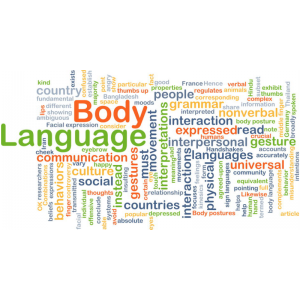
In any interpersonal interaction, it’s a rare privilege to have the WYSIWYG factor – ‘What you see is what you get’. Well, it is because, in our civilized world, most of the interactions are extremely multilayered. You have to constantly play the guessing-game for intents and motives – “Does he really mean what he says”? “Does she really feel how she emotes”? “Does he really believe in how he acts”? …
Yes, genuineness became the biggest victim of civilization. Since humans started living in groups, the evolving pushes-and-pulls of social apparatus have taught humans codes-of-conduct on regulating their emotions and expressions. Advent of language only complicated the matters further, as words are notional in nature and need not be rooted in sincere settings of our animal-reality.
As a result, today, the only way to develop an understanding into someone’s emotional realities is through observing someone’s nonverbal behavior. However, doing so cannot be just a commonsensical guessing-game. Well, before we discuss it in some details, watch this video to get the gist of what we are saying, why it is important, and how it has relevance for you at workplace and in personal life…
Yes, as we say at Socialigence… “Words express thoughts, body expresses emotions”. And this point is rooted in neuroscience. As I discussed in the video, every emotion has a corresponding movement attached to it. That movement is either internal to the body like an increase in heartbeat, or is external like someone’s hand touching his face. This is what leads to gestures, postures and expressions.
Most of our gestures, postures and expressions are governed by our emotional centers. They are beyond our conscious control, and thus in a way, leak our real emotions. But according to the science of nonverbal behavior, “It is not a gesture, posture or an expression, but a change in gesture, posture or expression that shows emotions”. So, whenever an expression or gesture comes on stimulus of an idea or action only then it is representative of emotions.
Thus, it is important to observe someone’s nonverbal behavior in the first few seconds of an emotional stimulation. However, a caution is necessary! Without understanding the detailed science of nonverbal behavior, only on the basis of superficial information, you cannot make a claim of reading people. In fact it is counterproductive. Precisely that’s why ‘social & emotional intelligence’ is so important.
Only a detailed knowledge of ‘structure and functioning of human brain’ and how it impacts one’s physiological reactions can help you learn emotional & social intelligence – the skill of managing self and connecting with others. Yes, it is a skill that can be learnt, practiced and mastered. However, it all begins with some important realizations like…‘Words express thoughts, and body expresses emotions’.
Dr. Sandeep Atre
‘Emotional & Social Intelligence’ Expert
Founder – Socialigence
Note: Socialigence (www.socialigence.net) offers self-paced video-based online course on ‘Social & Emotional Intelligence’ with content that has relevance across the globe, and delivery specifically customized according to the work-scenarios in India.
